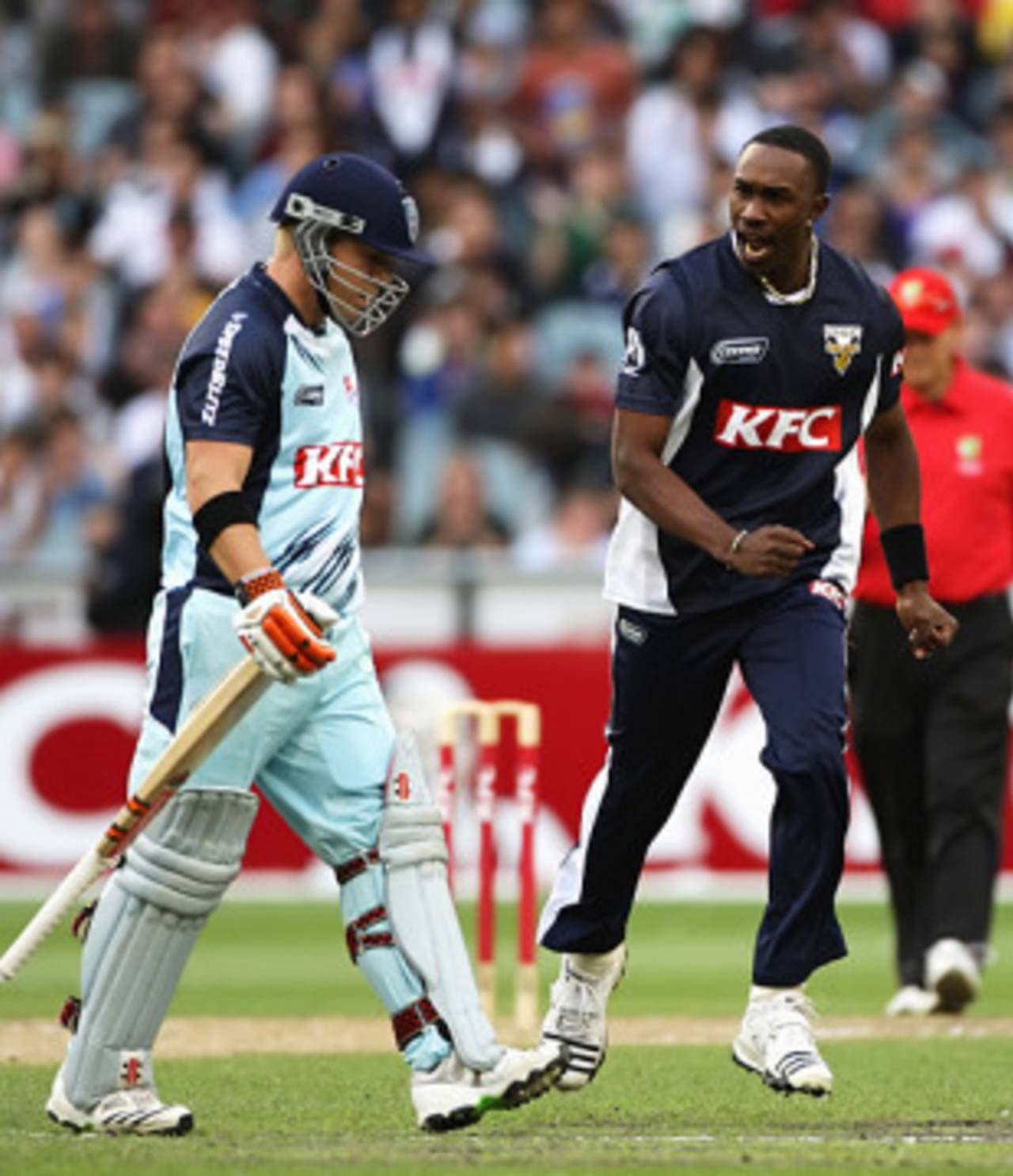The clock is ticking down to the next instalment of cricket's present and future. Test cricket, like a mighty thespian, is holding its own strongly; the middle-aged ODI is showing it hasn't lost all its youth; but there is no denying the world awaits the IPL like it does nothing else. There is drama on the field, and lots off it, and so when the first ball is bowled, it will mark both a beginning and an end.
There will be much innovation off the field: new entertainers, new broadcast ideas, and there is little doubt it will be a spectacle. But it will please me enormously if the finest innovations are seen on the cricket field. The IPL, and indeed all of Twenty20, is still pretty much a work in progress, and therefore fertile ground for the unexpected. Already the slow, loopy bouncer has arrived, and variations to the scoop over fine leg are being conceived. But the rulers of the game are firmly in the batting camp and so the bowlers will have to come up with new ideas, serve up a smorgasbord.
I'd be keen to see if the slower ball retains its importance. There is much to be said in favour of taking the pace off the ball, but critical to its success is the element of surprise - in the timing and in the manner of delivery. I will be watching both carefully. I suspect the time is not too far, if indeed it isn't here already, that batsmen set themselves up for the slow ball and regard the quicker one as a variation. That will be interesting because it means the really quick bowler could become thrilling again. Already we have seen with Dirk Nannes, occasionally with Shane Bond, and more recently in Australia with Shaun Tait, that possessing pace is coming back into style.
It will also be fascinating to see how that slower ball is disguised. Irfan Pathan did it well until it became a stock ball, and Dwayne Bravo is pretty good at it, but Sreesanth's legbreak can be seen a mile away. In fact, Anil Kumble bowled a particularly good slow, loopy yorker in South Africa. So can the spinners come up with something different as well? And while on innovation, here is one that bowlers would enjoy: a normal-length boundary, if some of our groundsmen remember what that means.
Meanwhile the scoop gets even more dramatic, and all those who worried about broken jaws are still being proved wrong.
Brendon McCullum against Australia was perhaps the most dramatic of all, playing the falling scoop in a manner that Rohan Kanhai, who played the peculiar but effective "falling sweep", would have been proud of. The scoop is getting finer in placement, now occasionally being played back over the keeper's head and sometimes even to third man. I'd like to look at a wagon wheel at the end of every match, to see whether the new V is outscoring the traditional one.
I suspect the time is not too far, if indeed it isn't here already, that batsmen set themselves up for the slow ball and regard the quicker one as a variation. That will be interesting because it means the really quick bowler could become thrilling again
But there is little doubt that it is becoming important to possess the scoop, or even the paddle. I noticed when Cameron White was pounding away at the Kiwis recently that third man and fine leg were always within the circle, aware that he would only hit the big ones down the ground. Maybe a little glide here and there, and therefore the need to place a fielder for it, would have opened up a hitting area down the ground. Yusuf Pathan is like that too, and so is Kieron Pollard. I guess those who can clear the increasingly shorter boundaries almost at will need not worry about delicate nudges.
I'd be interested in seeing whether the role of the wicketkeeper grows in importance. In its little existence, Twenty20 has forwarded the hypothesis that you need to be a batsman if you want to be in the side as a wicketkeeper. But on slow Indian tracks standing up might be critical and a miss from there rather expensive.
And the captains! We are starting to see that as the game shortens, and as cricketers from around the world converge and play together for a brief six weeks, the role of the captain becomes more important. Sneaking an over out of a part-timer, timing the appearance of the big-hitter, making a West Indian feel at home - the captain, I believe, is already worth two players.
So will we see the switch-hit take centre stage, batsmen batting right-handed and left-handed, bowlers bowling balls that never rise? What next?
It should be a great tournament if two enemies leave it alone: terrorists, and groundsmen who prepare 200-plus tracks.
Harsha Bhogle is a commentator, television presenter and writer
